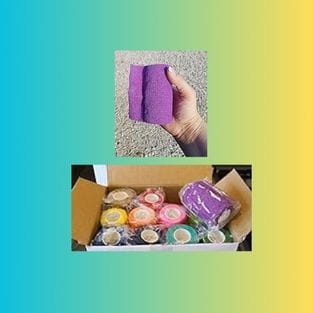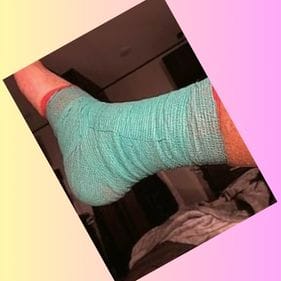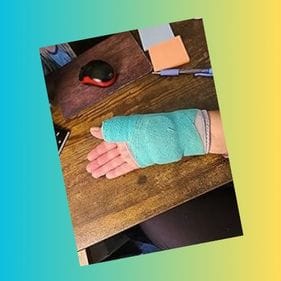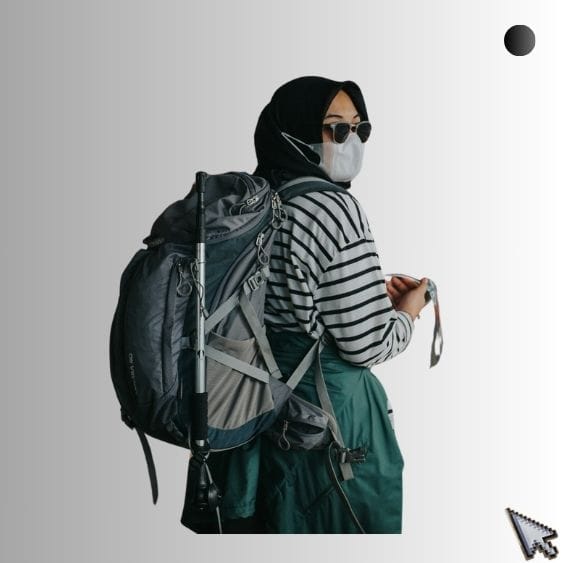Self-adhesive bandage wraps are a staple in first aid kits and sports bags around the world. Their versatility and ease of use make them an essential item for wound care, injury prevention, and more.
In this post, we explore the myriad uses of self-adhesive bandage wraps and how they can be a game-changer in your health and wellness routine.
Key Takeaways:
- Self-adhesive bandage wraps are versatile and can be used for compression, support, and securing dressings.
- They are easy to apply and remove, making them convenient for a wide range of situations.
- Understanding the proper techniques for application can maximize the benefits of self-adhesive bandage wraps.
The Basics of Self-Adhesive Bandage Wraps
Self-adhesive bandage wraps, also known as cohesive bandages, are unique in that they only stick to themselves and not to skin or hair.
This feature makes them incredibly user-friendly, as they can be applied quickly and painlessly. They come in various widths and colors, catering to different needs and preferences.

- These bandages are made from a stretchy material that allows for adjustable compression, which is crucial for managing swelling and providing support to injured areas.
- The material is also breathable, promoting air circulation to the wound and reducing the risk of skin maceration.
Wound Care and Management
When it comes to treating minor cuts, scrapes, or abrasions, self-adhesive bandage wraps are highly effective.
- They can be used to hold a primary dressing in place, ensuring that the wound remains clean and protected from external contaminants.
- The self-adhering property eliminates the need for clips or fasteners, which can be cumbersome and uncomfortable.
- The flexibility of the bandage wrap allows it to conform to the shape of the body part it's applied to, providing a secure fit that can accommodate swelling without cutting off circulation.
*This adaptability is especially beneficial for wounds on joints or areas that move frequently.
Sprains and Strains: Providing Support
Athletes and physically active individuals often rely on self-adhesive bandage wraps to manage sprains and strains.
The wraps can be used to apply controlled compression to an injured limb, which helps to reduce swelling and provide support to the affected area. This can aid in the healing process and prevent further injury.

For example, wrapping a sprained ankle with a self-adhesive bandage can stabilize the joint and make it easier to walk while recovering.
*The key is to wrap the area snugly but not too tightly, as excessive compression can hinder blood flow and delay healing.
Sports and Athletic Performance
In the realm of sports, self-adhesive bandage wraps are not just for injury management; they're also used for preventive measures.
Athletes may wrap vulnerable joints, such as wrists or knees, before engaging in activities that put stress on these areas.
*This proactive approach can help to prevent sprains, strains, and overuse injuries.
Additionally, the wraps can be used to secure padding or protective gear in place, ensuring that it doesn't shift during vigorous movement.
*This is particularly useful in contact sports where consistent protection is crucial.
Post-Surgical Care and Rehabilitation
Following surgery, self-adhesive bandage wraps play a significant role in the recovery process.
- They can be used to hold surgical dressings in place, provide compression to reduce swelling, and support weakened areas as they heal.
- In rehabilitation settings, therapists may use these wraps to facilitate controlled movement exercises or to provide proprioceptive feedback to the patient.
*The ease of application and removal is a significant advantage in post-surgical care, as it allows for quick dressing changes and adjustments without causing discomfort to the patient.
Veterinary Applications
Self-adhesive bandage wraps are not just for humans; they are also widely used in veterinary medicine. These wraps are ideal for treating injuries in animals because they stick to themselves and not to fur. They can be used to secure dressings on wounds, provide support to sprained limbs, and even to hold IV lines in place.

Veterinarians often use brightly colored or patterned wraps to make the bandaging more visually appealing, which can be especially helpful when dealing with young or anxious animals.
Occupational Therapy and Ergonomics
In occupational therapy, self-adhesive bandage wraps can be used to create custom splints or supports for patients recovering from hand injuries or surgeries.
They can also be applied to tools and equipment to improve grip or reduce strain for individuals with arthritis or other conditions that affect hand strength and dexterity.

*Ergonomic adaptations made with self-adhesive wraps can make a significant difference in the comfort and productivity of individuals in the workplace, particularly those who perform repetitive tasks.
Travel and Outdoor Adventures
For those who love to travel or engage in outdoor activities, self-adhesive bandage wraps are a must-have item in any emergency kit – - they are lightweight, compact, and can be used for a variety of purposes, from treating blisters and minor wounds to stabilizing sprained joints on the trail.
*Because they are water-resistant and won't come undone easily, self-adhesive wraps are particularly useful in environments where traditional bandages might not hold up, such as in water or during extreme activities.
Skin Protection and Blister Prevention
Self-adhesive bandage wraps can also be used as a preventive measure against blisters and chafing.
*By wrapping areas prone to friction, such as the feet or hands, individuals can create a protective barrier that reduces the risk of skin damage during activities like hiking, running, or rowing.
**This preventative application is not only helpful for athletes but also for individuals who work with their hands or are on their feet for extended periods.
DIY and Craft Applications
Interestingly, self-adhesive bandage wraps have found a place in the world of DIY and crafts.
Their ability to stick to themselves without leaving a residue makes them an excellent tool for bundling wires, securing loose items, and even creating custom grips on tools or sports equipment.

Crafters may also use these wraps for various projects, taking advantage of their texture and color variety to add a unique touch to their creations.
Your Takeaway
Self-adhesive bandage wraps are a versatile and essential component of any first aid kit, sports bag, or emergency pack.
Their uses extend far beyond basic wound care, providing support for sprains and strains, aiding in post-surgical recovery, and even finding applications in veterinary medicine, occupational therapy, and beyond.
With their ease of use and adaptability, self-adhesive bandage wraps are a valuable tool for maintaining health and well-being in a variety of settings.
FAQ Section
Q: Can self-adhesive bandage wraps be reused?
A: Generally, self-adhesive bandage wraps are designed for single use, especially when used for wound care or when they become soiled. However, if used for support or compression and remain clean, they can sometimes be reused a few times before losing their elasticity and self-adhesiveness.
Q: Are self-adhesive bandage wraps safe for sensitive skin?
A: Yes, most self-adhesive bandage wraps are made from hypoallergenic materials that are safe for sensitive skin. However, if irritation occurs, discontinue use and consult a healthcare professional.
Q: How tight should a self-adhesive bandage wrap be applied?
A: A self-adhesive bandage wrap should be applied snugly to provide support or compression but not so tight that it restricts circulation. If you experience tingling, numbness, or increased pain after applying the wrap, it may be too tight and should be adjusted.
Disclaimer.
When you purchase through links on our site, we may earn an affiliate commission (that's how we stay in business). FirstFewFinds may use affiliate links to products and services on retailer sites for which we can receive compensation if you click on those links or make purchases through them. We hope you find the list of our first few finds useful and helpful. Each product on our list has been carefully chosen by our writers and all opinions are our own. Check your choices and enjoy finding exactly what you need!








